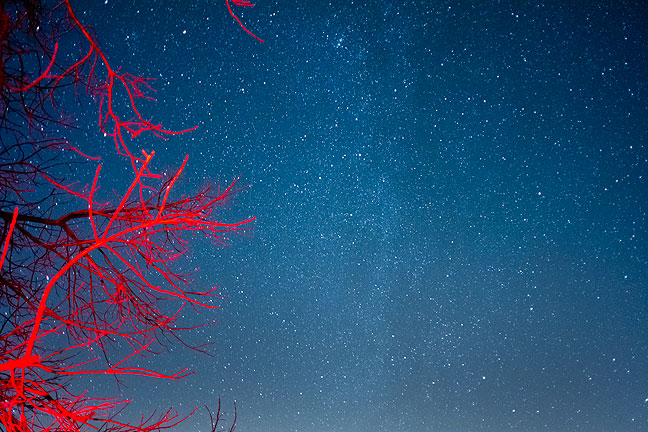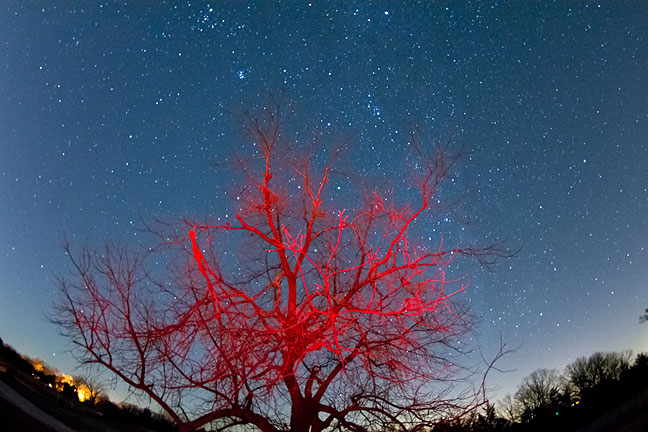
The Nikon D7100 that recently came into my possession is the first camera I have owned that is capable of really ridiculously high ISO settings, and is purportedly capable of delivering reasonably clean images at those settings. By “ridiculous” I mean 25,600 ISO, which was unthinkable in the film era. Additionally, the camera has a built-in intervalometer, which can be programmed to shoot any number of frames at any interval.
One thing I wanted to try with these capabilities was photographing the night sky. I am planning a springtime hiking trip, and want to integrate night photography into it.
I live in an area of relatively low light pollution (though my home in the Oklahoma doesn’t compete with, for example, the high desert or mountain peaks.) It happens that tonight after dark, the moon hadn’t risen yet, so I got started.
My first stab was just kind of an exposure test. ISO 6400, 20mm AF Nikkor f/2.8 @ f/2.8, for 30 seconds. This wasn’t a bad guess, and resulted in an image with thousands of stars visible on a field somewhat contaminated by light pollution. Next, I mounted my Tokina 10-17mm f/3.5-4.5, set at 10mm and f/3.5 for 30 seconds. In both images, I used my headlamp, set to red, to softly paint the tree limbs red.
The results of both attempts reveal that I need much more reading and practicing on the subject, but that this camera has the potential to make some extraordinary night sky images.

Think of the potential for night sky motion.
Star sets, star rises.